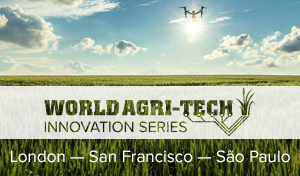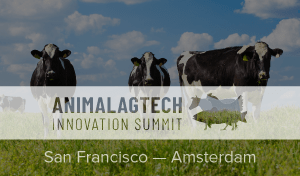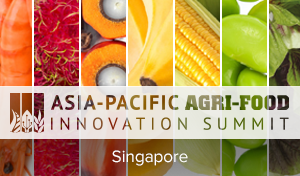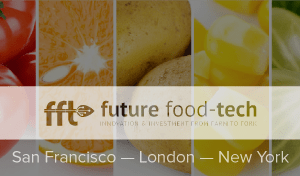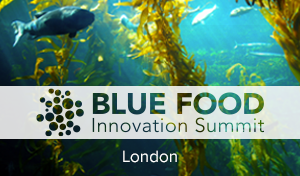Providing two days of debate and targeted networking with global consumer brands, producers, converters, policymakers, early-stage innovators, and investors – Rethinking Materials offers a unique opportunity to learn from adjacent sectors and gain insights into innovative applications of new materials and technologies that can future-proof your business and achieve more sustainable supply chains.
Ahead of their panel taking place next month in London, leaders from Braskem and Modern Synthesis discuss recyclability and reaching true circularity: How are technologies advancing in this space? How are material choices impacting recycling rates? What technologies are they actively scouting for?
As the Open Innovation & Technology Lead for Europe, Dirk Haensch holds the position as Global Head of Advanced Materials for the development of new materials across Braskem, directed to fulfil the organisations corporate strategic growth avenues and to deliver sustainable solutions through chemical and plastic innovation.
Jen Keane, Co-Founder and CEO of Modern Synthesis, is a designer, material innovator and entrepreneur. Her biodesign work has not only captured the imagination of the fashion industry, but also garnered numerous awards, including the Mills Fabrica Techstyle prize and the LVMH Green Trail Award.

- As brand owners increasingly aim for higher recycled content rates in their products, the demand for recycling technologies is expected to grow. How are technologies advancing in this space?
DH: “As part of the circular economy action plan, the European Commission identified the increase of plastic recycling as an essential prerequisite for the transition to a circular economy. Importantly, any increase in recycled content in food packaging and other food contact materials remains the need to secure a high level of protection of human health. Food packaging requires a 95% use of recycled food packaging materials, which need to be detected. Initiatives like NEXTLOOPP or Holy Grail 2.0 provide new approaches to meet this target.”
JK: “While recycling solutions have made significant progress, we recognise that simply recycling existing materials is not enough to achieve climate goals. Synthetic fibres can only be recycled a limited number of times before becoming unusable because the quality degrades every time. A truly circular model is one in which things can be kept in use for as long as possible at their highest value. This just isn’t possible with petroleum-derived synthetics.”

- How are material choices impacting recycling rates? What scope is there to develop new recyclable materials or solutions that could replace current hard to recycle materials?
DH: “ESPR (Ecodesign for Sustainable Products Regulation), PPWR (Packaging and Packaging Waste Regulation) and EU Taxonomy Regulation, to name just a few, help give guidance and set requirements for material choices to increase recycling rates and for the development of new materials. New developments target mono-material usage, substances that inhibit recyclability, energy and resource efficiency as added scope. At Braskem we believe that every resource must be used to its fullest potential. The “waste-to-parts” technology of Upsyde does just that, turning hard-to-recycle plastics into sustainable circular goods manufacturing a range of products, such as pallets, road plates, and heavy-duty mats.”
JK: “Most materials that feed into recycling systems are packed with pollutants and hazardous chemicals, which remain in the loop even when recycled.
We’re excited about new material technologies that eliminate harmful ingredients from the source and can fit into future recycling streams, ensuring that harmful substances and polluting plastics stay out of the loop altogether.”
- As innovation in materials continues to accelerate, how is the value chain pulling together to address the challenges of recyclability?
DH: “Europe is fostering private and public initiatives to accelerate the transition and close the loop for a true circular economy. A cornerstone of the circular economy is the waste hierarchy. It involves (re)-designing products, as they should be developed with their second life in mind. That is the reason why Braskem decided to join STOPP a multi-stakeholder initiative to revolutionise the approach towards food plastic packaging by embracing the “5 Rs”: Refuse, Reduce, Redesign, Reuse, and Recycle. Cross value chain projects like these are vital to finding truly sustainable and circular solutions.”
- What innovations/technologies have you seen, that excite you the most? What are you actively scouting for?
DH: “Mechanical recycling reduces resources used to produce virgin polymers, waste and greenhouse gas emissions. Technologies that help to improve the detection and separation of plastics, even allowing to separate by application, catch a lot of interest. Examples are digital water mark or fluorescent markers to detect f.ex. food packaging. Artificial intelligence is expected to enhance the accuracy and efficiency of inspection processes in packaging industry as well. Really, we’re excited about a lot!”
JK: “One area that we are actively scouting for is the integration of our cellulosic materials into existing and emerging recycling streams. We are exploring how our materials can be used in cellulosic chemical recycling, which converts cellulose-based textiles and other plant-based materials back into usable fibres for clothing etc.
We are also looking ahead to the emergence of biorecycling or biocatalytic recycling, which allows a material to be recycled in an unlimited way and maintain its original properties. We’re actively collaborating with other researchers to develop a recycling process for our bacterial cellulose-based materials. Cellulosics are already built into nature’s regeneration cycles, so by converting them back into feedstocks for future nanocellulose production, we can tap into nature’s regenerative cycles and close the loop on our own materials. This not only benefits our own production processes but also has the potential to feed into new cycles of growth and production in other industries as well.”
Dirk and Jen will join the panel ‘Achieving Recyclability: Advances in Technology for True Circularity’ with leaders from Circularity Capital and Alliance to End Plastic Waste. Discover the agenda.

 CLOSE
CLOSE
